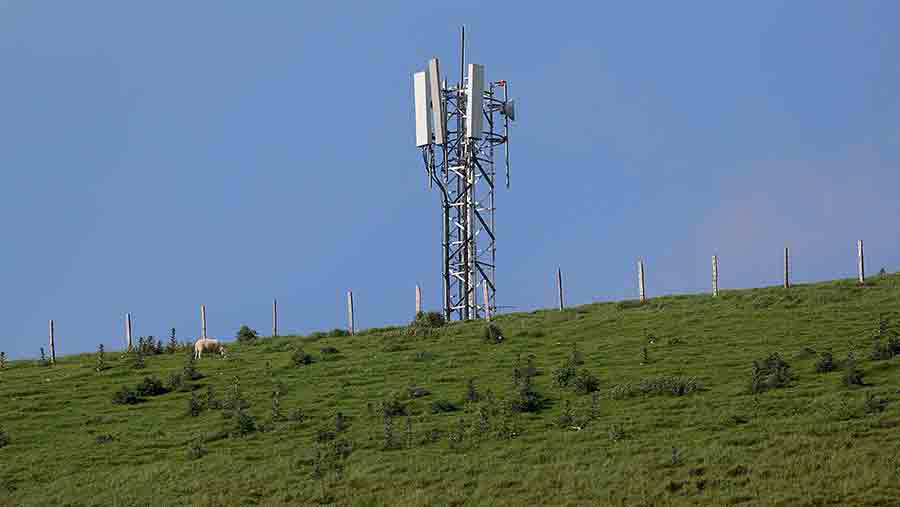How to manage radiation exclusion zones for phone masts
 ©Dimitris Legakis/Shutterstock
©Dimitris Legakis/Shutterstock Farmers with telecoms masts on their land must fully understand radiation exclusion zones to safeguard people’s health and protect against potential liability claims.
Significant levels of exposure to the radio waves emitted by base stations on telecoms masts can affect people’s health, so each mast must have an exclusion zone, according to Jeremy Moody, Central Association of Agricultural Valuers (CAAV) secretary and adviser.
With the upcoming rollout of 5G, these exclusion zones will need to be larger, because the range of potentially dangerous radio waves is far greater than that for 4G.
See also: Landowners warned to be aware of phone mast radiation risk
However, there is no requirement for operators to notify anyone about these areas, which could create problems for farmers, their staff and the general public.
Farmers Weekly asked Mr Moody what landowners need to know about radiation exclusion zones.
How big are exclusion zones?
The size of the exclusion zone depends on the height of the mast, the direction it faces and its output power.
The zones are significantly larger for 5G equipment than for 4G, and, as such, can extend to neighbouring land or buildings.
For example, a typical 4G transmitter has a public exclusion zone with a radius of 19-20m around the antenna.
However, under the International Commission on Non-Ionizing Radiation Protection (ICNIRP) guidelines, a 5G transmitter might need an exclusion zone of 50m or more from the front of the antennae and also a small area to the rear.
The exclusion zone is typically higher than ground level, so a 20m antenna will typically have a zone that falls from the top of the equipment to about 4m above ground.
This means in a flat greenfield situation, the exclusion zone is unlikely to pose a problem for a landowner, unless they are working at height.
But it becomes more of an issue if the terrain is not flat or where there are buildings in the vicinity or development potential, as the height of the building may take it into the exclusion zone.
Also, the smaller the antenna, the lower the exclusion zone falls, so an antenna mounted 15m above the ground would have an exclusion zone that reaches closer to the ground.
Why landowners need to act
The exclusion zones need to be clearly understood by the site owner in order to manage their liability, and to understand any potential limitations on the use of nearby land and buildings.
Historically, operators often accepted all liabilities as part of a mast agreement and paid a market rent. But now they are seeking agreements at much lower rents and to reduce their financial exposure by coming forward with terms where they try to cap their liabilities at £5m.
This means the site owner would be forced to pick up any excess liability if something should ever happen to a member of the public, staff or neighbour that could be linked to the mast.
Landowners with existing masts should ask the operator for drawings setting out the exclusion zones under the ICNIRP guidelines, and for details of any plans to upgrade the equipment which might mean the exclusion zones change.
They can then make their staff aware of the extent of any exclusion zone, as part of their health and safety policy.
At renewal of any agreement, site providers should seek to negotiate for this information to be provided at regular intervals or when there has been a significant upgrade to the site.
If negotiating a new agreement, terms should hold the operator fully liable for losses and claims arising from the mast.
Additionally, site owners may wish to stipulate contractual terms restricting the expansion of exclusion zones, require the site to be switched off for the landowner or others to carry out work within the exclusion zone, and make operators liable for any necessary staff training.
